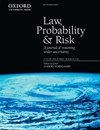印度商业法的规模化
IF 1.4
4区 社会学
Q1 LAW
引用次数: 1
摘要
如何在金融荒漠中推动经济企业?40年来,印第安部落、学者、经济学家和政策制定者一直在考虑刺激经济增长的手段和方法。制定和推广《示范部落担保交易法》(简称“MTSTA”)等努力有望创造条件,为部落地区提供金融机会,这些地区的贫困率比美国其他任何地方都高得多。然而,虽然这项法律已经实施了十多年,但部落一直不愿采用它。这篇文章填补了关于印度国家统一法律承诺的文献空白,它描述了缩小统一法律适用于部落背景和寻求保护地方价值的地方主义之间存在的内在紧张关系。本文认为,在这些地区,部落接受或拒绝统一的选择是建立在正式协会和有机关系的基础上的,这些关系旨在面对其他稀缺资源时创造“制度厚度”。本文章由计算机程序翻译,如有差异,请以英文原文为准。
Scaling Commercial Law in Indian Country
How do you drive economic enterprise in a financial desert? Indian tribes, academics, economists, and policy makers have considered the means and methods for energizing economic growth for forty years. Efforts such as the creation and promotion of the Model Tribal Secured Transactions Act (“MTSTA”) promise much toward creating conditions that would gather financial opportunity to tribal regions that experience poverty at a strikingly higher rate than any other place in the United States. And yet, while the law has been available for more than ten years, tribes have been reticent to adopt it. This Article fills the vacuum in the literature around the promise of uniform laws in Indian Country by describing the inherent tension that exists between downscaling uniform laws into tribal contexts and the localism that seeks to preserve localized values. This Article argues that tribal choices to accept uniformity or reject uniformity in these areas are built around a combination of formal associations and organic relationships designed to create “institutional thickness” in the face of other scarce resources.
求助全文
通过发布文献求助,成功后即可免费获取论文全文。
去求助
来源期刊

Law Probability & Risk
MATHEMATICSSTATISTICS & PROBABILITY&-STATISTICS & PROBABILITY
CiteScore
2.10
自引率
28.60%
发文量
8
期刊介绍:
Law, Probability & Risk is a fully refereed journal which publishes papers dealing with topics on the interface of law and probabilistic reasoning. These are interpreted broadly to include aspects relevant to the interpretation of scientific evidence, the assessment of uncertainty and the assessment of risk. The readership includes academic lawyers, mathematicians, statisticians and social scientists with interests in quantitative reasoning.
The primary objective of the journal is to cover issues in law, which have a scientific element, with an emphasis on statistical and probabilistic issues and the assessment of risk.
Examples of topics which may be covered include communications law, computers and the law, environmental law, law and medicine, regulatory law for science and technology, identification problems (such as DNA but including other materials), sampling issues (drugs, computer pornography, fraud), offender profiling, credit scoring, risk assessment, the role of statistics and probability in drafting legislation, the assessment of competing theories of evidence (possibly with a view to forming an optimal combination of them). In addition, a whole new area is emerging in the application of computers to medicine and other safety-critical areas. New legislation is required to define the responsibility of computer experts who develop software for tackling these safety-critical problems.
 求助内容:
求助内容: 应助结果提醒方式:
应助结果提醒方式:


